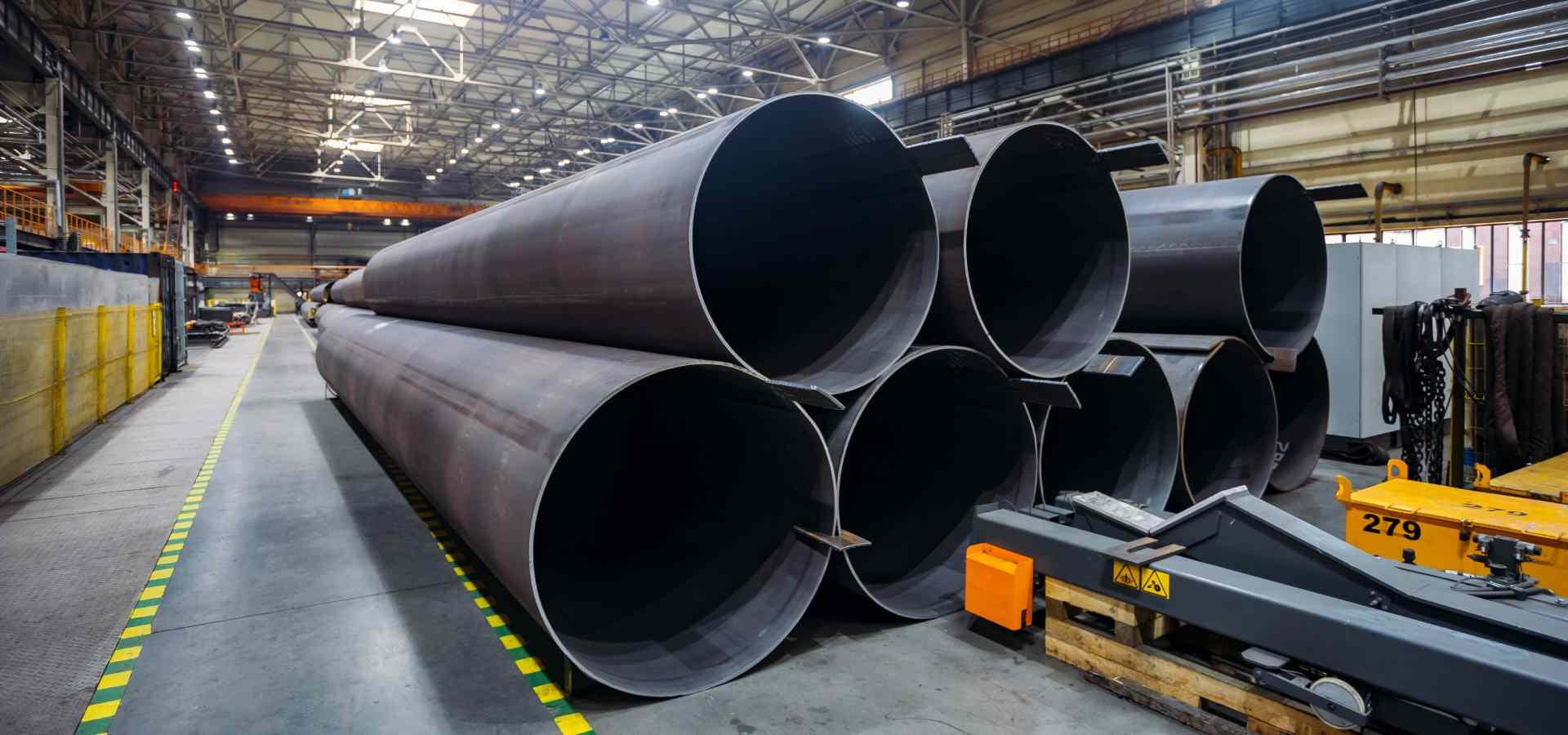

Coating Steel – A Brief Guide
Surface Prep, Priming, and Spraying
Surface Preparation
Steel surfaces need to be degreased (if present) and blast cleaned to SSPC SP 10/ NACE No. 2 , near white finish. Blast cleaning roughens the surface to create “anchors” for the coating and resembles coarse sandpaper. The blast cleaning also increases the surface area available for bonding. The height between the peaks and valleys is known as the Anchor Profile. For 100% Solids Polyurethane Coatings, the specified Anchor Profile is +75 Microns and is tested regularly. This is higher than conventional coatings since a thicker film is applied. We can think of this as similar to the foundation of a building; a taller building requires a deeper foundation.
Blast cleaning is achieved by abrasive particles propelled at high velocity onto the surface, either by compressed air or by centrifugal wheels. Compressed air – abrasive blast cleaning is usually done for outdoor / open air operations using disposable abrasive Copper or Coal Slag. Pipeline external / internal shop coating is usually done using centrifugal wheel blasting using recycled abrasive – usually Steel Grit and sometimes Garnet abrasive. The abrasive in all cases is sharp, angular to produce deep pits. Rounded abrasive are not used since they produce a dimpled surface.
Priming
Elastomeric coatings are primed after blast cleaning. The primer is allowed to be ‘touch dry’ before the topcoat is spray applied. The primer has a ‘recoat interval’, i.e. the maximum time that can elapse before the topcoat can be applied. This is related to the cure speed of the primer since topcoat has to be applied before the primer is fully cured and still has un-reacted chemical groups to react with topcoat. Re-coat interval is temperature dependent since the cure speed is affected by the temperature.
Rigid coatings do not require a primer and can be applied direct to metal (DTM). However more care is required to ensure surface is dust/contamination-free prior to coating. In both systems, the primer/topcoat is to be applied before any flash rusting has taken place. Also experience has shown that blast cleaned surface has to be primed/ coating as soon as feasible (preferably before 4 hours) to get high adhesion, delays tend to decrease the adhesion obtained.
Coating & Automation
100% Solids Polyurethane Coatings are designed for unlimited build using multiple ‘wet-on-wet- passes. The two components react rapidly. Gel time (conversion from liquid to semi solid), tack free time (cannot be deformed by thumb), handle dry and full cure time depends upon the specific formulation. Tack free time varies from 3 to 60 minutes.
Cured coating will be hard (except for the high elongation products), glossy and smooth. Spray is by hand held spray gun. Pipeline external and internal are however sprayed using automated/ robotic equipment.
Spray Equipment & Process
Fast setting, 100% Solids Polyurethanes comprise of two components, the Resin (Polyol/ Polyamine/ Blend) and the Activator (Isocyanate). These are supplied in separate 200 Litre drums and are sprayed using plural component airless spray equipment. The spray system comprises Hydraulic pumps driven by air motors which lightly pressurise the two components and supply them to a proportioner. This unit proportions the two liquids in the designed ratio by volume (3:1 / 2:1/ 1:1) and develops a pressure of 2000-3000 Psi.
The two liquids under pressure are pumped to a mixer manifold / static mixer where they mix intimately and flow through a spray hose into a spray gun. The mixed material atomises on exiting the spray nozzle and is sprayed onto the surface. The mutual reaction of the two components is very fast causing an instant viscosity build up prior to spray and post spray fast cure into a solid. The whole system is dynamic with supply, mixing & spraying done continuously. There is no mixing of lots in containers and spraying. It is a high volume spray operation with typical spray tip spraying 120-200 Litres/ Hour. As soon as the spray is stopped, the section between the manifold and spray gun is flushed clean with a purge liquid to prevent the coating from blocking the system.
Using the plural component system needs factory trained operators.
Ambient Conditions
Regular monitoring of the surface temperature and ambient conditions (dew point) is carried out during the coating process. This is to ensure that the surface temperature always exceeds the dew point by at least 3° C. If not dew can form on the surface and the coating is applied on the microscopic layer of water. Dew point depends upon the relative humidity and the ambient temperature – warmer air is able to hold more water than cold air. Therefore this situation is aggravated during cold, humid environments. In situations where the dew point criterion is not met, the surface can be heated up or dehumidifiers can be used to remove excess moisture from the air.Testing
When the coating is finally cured, it is tested for the following parameters to ensure that it has been correctly applied. The quality of coating materials are also validated through this process as the parameters would not be achieved if the material was non-conformant.
- Adhesion using “Pull Off Adhesion Tester” as per ASTM D 4541
- Dry film thickness using “Magnetic Mil Gauge” as per SSPC PA 2
- Holiday (discontinuity) test as per NACE RP 0188-90
- Hardness using “Durometer” as per ASTM D 2240
For each of these tests, a similar standard can be used with appropriate caution.